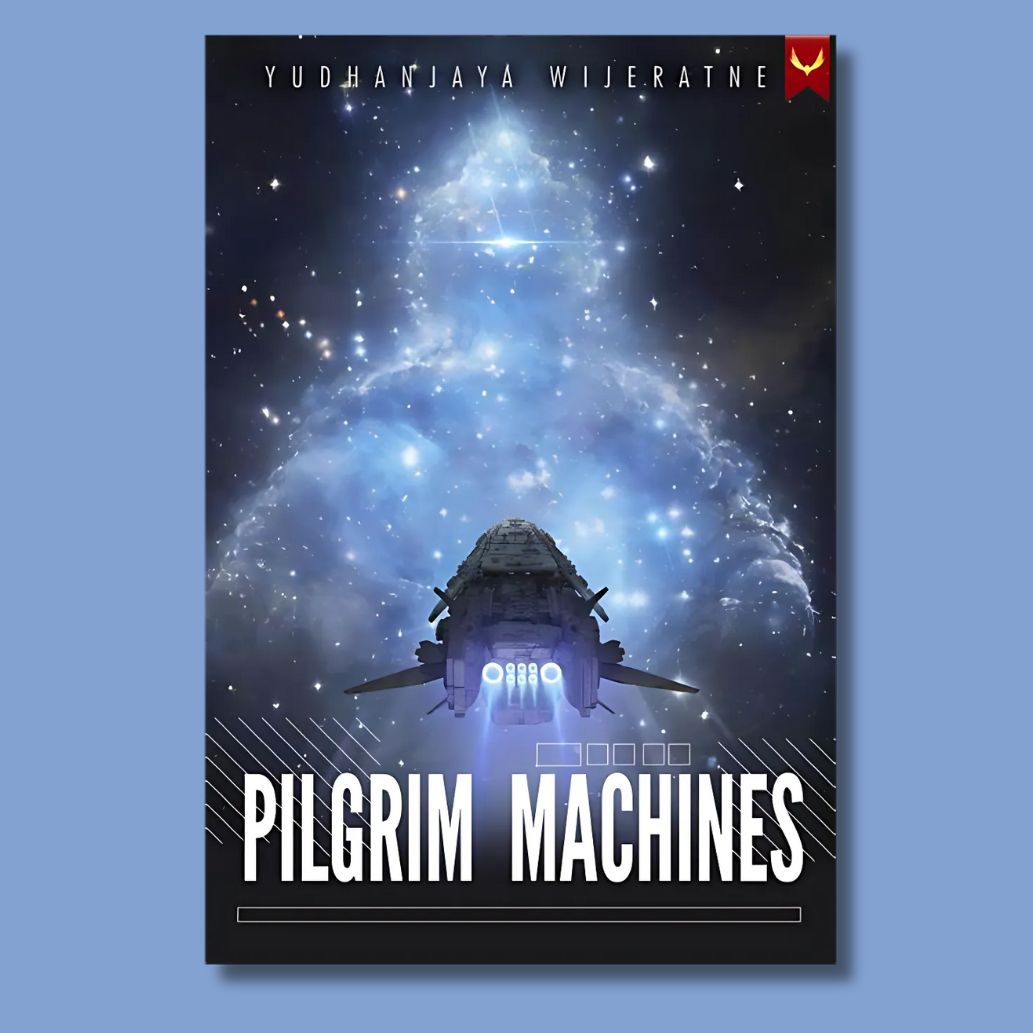
Foreword to the Wretched and the Damned
A group of superpowered malcontents take down the corrupt, nepotistic government of Sri Lanka.
A starship sets out to search for God - or something so close as to make no difference.
This manuscript is mildly cursed. Sometime in 2020, hot off The Salvage Crew, I began writing the sequel. I got about fifteen thousand words in when something went wrong between my writing software, the Chromebook I was using, and its connection to Google Drive. I woke up the next day to find that only the first page was left.
The second time was in 2024. I had just signed the contract for the book, drafted and redrafted the whole thing (this time purely on my computer, not trusting any cloud services). Then my drive fried and I lost the whole thing. All that was left were about fifty thousand words from a previous draft and my notes.
If you’ve read this far, you’ll have noticed the Ship of Theseus reference. This manuscript is very much a Ship of Theseus. I can only hope that it’s better for it.
As with The Salvage Crew, I’ve used AI for this book. In The Salvage Crew, I was ambitious: I experimented with apophenia, the ability to find patterns in random noise. I wrote character generators, event generators, weather generators—all basic Markov chains—and a machine poet that was a retrained GPT-2 model, working off a corpus of translated Tang Dynasty poetry.
This time I was much less ambitious, because I knew what I wanted the story to be about. Very specifically: the Stranger’s way of speaking is AI, generated by a variant of Eluwa, a model I trained using OPT-3.5 as the base. Eluwa means goat in Sinhala, my native language, and it’s an open-source model meant for low-resource, non-commercial research (https://github.com/yudhanjaya/Eluwa).
I used it because I wanted to experiment with ways of speaking that seemed truly other, while still preserving obvious meaning even in completely broken syntax. Everything else, good or bad, is me. I did write a galaxy generator that could give me stars, planets, and even civilization tags (https://github.com/yudhanjaya/GalaxyGen), mostly as a challenge to see what I could do in a few days—but reality is often far more profound and fascinating.
So, having explained myself, I’d like to thank others that contributed to the existence of this book. There’s no need to explain every single reference in here, but I want to make sure I those whose shoulders I stood on.
I am a Buddhist from a country most made of Theravada Buddhists. I don’t call myself a Theravada Buddhist, of course, because I believe in personal discovery, not corrupt institutions that profess enlightenment but promote hatred and dictatorial states. I will not say more, because of the legal situation in Sri Lanka around these things.
However, I do want to say that I have long been fascinated by a statue of the Buddha that was once in a temple near where I lived: a terrible, savaged skeleton, representing the days when Siddhartha Gautama supposedly starved himself and meditated with rotting corpses to understand the nature of death. Out of that image came the Graveyard Keeper; and of course Ember is a Buddha in analogue, Gautama freed from illusion.
One of the first science fiction books I read was the Garden of Rama by Arthur C. Clarke and Gentry Lee. I didn’t really like most of the book—I felt the people were completely unrealistic—but I loved the idea of an immense spaceship, filled with so many different species. Years later, I encountered the same breadth and scope in Iain Bank’s The Culture, which I re- read every so often. Excession, in particular, was the force that pushed me to finally complete this novel.
I’d like to thank Pablo Carlos Budassi, who used space agency imagery to create the beautifully annotated map of our galaxy that Wikimedia hosts at https://en.wikipedia.org/wiki/Milky_Way#/media/File:Milky_way_map.png. Budassi does some fine work, including logarithmically scaled maps of the known universe.
I’d also like to thank the Googlers who built the 100,000 stars experiment for Chrome (https://stars.chromeexperiments.com). Before I stumbled across this thing, I was exploring the underlying databases by myself, sketching out what I might approximately call “UN” and “ORCA” space—and some of these things are painful to do in two dimensions. The 100,000 stars experiment was very useful for this.
I found the following papers extremely useful and fascinating: Schneider, N., et al. “A new view of the Cygnus X region-KOSMA CO 2 1, 3 2, and CO 3 2 imaging.” Astronomy & Astrophysics 458.3 (2006): 855-871 and Nanda Kumar, M. S., U. S. Kamath, and C. J. Davis. “Embedded star clusters in the W51 giant molecular cloud.” Monthly Notices of the Royal Astronomical Society 353.4 (2004): 1025-1034.
The quote about messiness and serendipity is a paraphrasing of an observation by François Chollet of Google. Without Keras and Tensorflow, the world of machine learning would be a far cry from what it is today.
The relativistic time calculator from the Orion’s Arm Project came in pretty handy (https://www.orionsarm.com/fm_store/RTTCalc.htm). There are plenty of other calculators online, but theirs was the one that gave me the granularity I wanted.
Finally, the Minkowsky Manifold. I stumbled onto this by way of Kurt Gödel. As the story goes, Gödel was a friend of Einstein and was very curious about this relativity business; naturally, being Kurt Gödel, he found a solution—a rotating universe that would permit time travel while still perfectly satisfying Einstein’s math. See Gödel, Kurt. “An example of a new type of cosmological solutions of Einstein’s field equations of gravitation.” Reviews of modern physics 21.3 (1949): 447.
Fascinating, what a top-tier intellect can do. Now I didn’t want a Gödel solution, of course. But this took me to closed timelike curves, in which Gödel also played a hand; and from there to the work of Hermann Minkowski and Minkowski space-time and the idea that you could jinx a light-cone (which I maintain is a very misleading name). I’m a barely competent mathematician even on the best of days, but wade through enough of this stuff, and ideas stick to you like burrs.
Enough of it came together—especially the point that our general models were way too general, and not powerful enough to model minor variations. That was safer ground; I have enough machine learning work to know well the adage that all models are bullshit, but some models are useful. I was reminded of Tom Stoppard’s Arcadia, where Thomasina, the child prodigy, goes on her epic rant about how deterministic the universe could be if you could do the math well enough. That gave me a reason for why Beacon alone could model this.
On a similar subject: the language that Beacon shared. The idea of a topography of conversation came from playing the Outer Wilds. It’s an incredibly beautiful, thoughtful game, and those spiral structures of alien language have haunted me ever since.
Last but not least, I would like to thank 65DaysofStatic, who did the incredible soundtrack for No Man’s Sky. I listened to it on repeat throughout the writing of this book. Music for an infinite universe: perfection.
